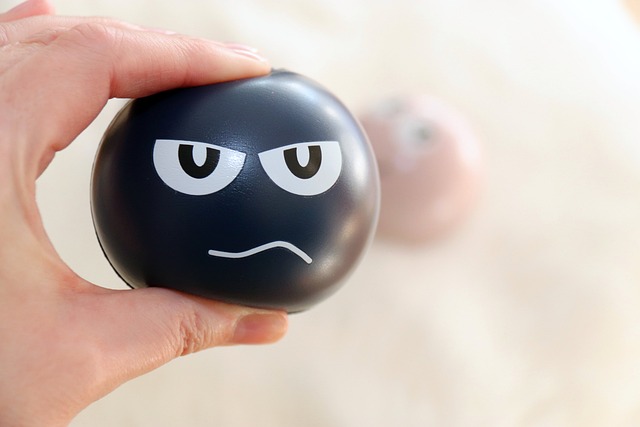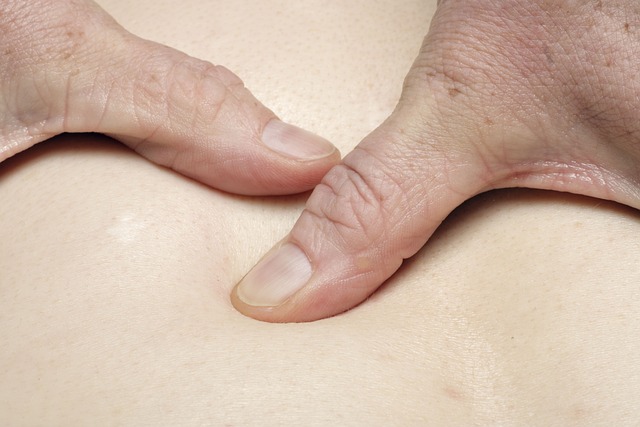Bruising after a deep tissue massage. Causes, prevention, and what’s normal
Deep tissue massage therapy, a therapeutic technique that involves applying a substantial amount of pressure to alleviate knots and tension in the connective tissue, can rejuvenate sore muscles. However, for some individuals who bruise easily or are prone to bruising like a peach, bruising after a deep tissue massage can be a cause for concern.
Understanding the Causes of Bruising After a Deep Tissue Massage
Bruising can occur during various types of massage, but it is more common after deep tissue sessions than traditional Swedish massage. The increased pressure in deep tissue massage can lead to bruising, particularly if capillaries near the surface of the skin become damaged during the session.
Deep tissue massage aims to break up these knots in the connective tissue, which may cause capillaries to break, resulting in bruising. When pressure is applied to your muscles, the blood’s ability to clot may be compromised, and red blood cells can leak, causing discoloration in the bruised area. This type of bruising is known as ecchymosis.
While bruising after deep tissue massage is rarely a cause for concern, it may be more pronounced in those who are already prone to bruising. If you get a bruise, it usually turns blue or dark purple within a few hours, indicative of the body’s response to capillary damage.
There are ways to reduce the possibility of bruising following a deep tissue massage. Communicate with your professional massage therapist and let them know if you bruise easily. They can adjust their techniques and use less pressure to avoid bruising. Also, consider avoiding the use of aspirin or ibuprofen before your massage, as these medications can thin the blood and make you more vulnerable to bruising.
It’s essential to note that the level of bruising and tenderness may vary from person to person, and while fresh bruises may appear inflamed and reddish, they usually reduce over time. The stagnant blood from damaged capillaries collects near the surface of the skin and may eventually disperse throughout your body.
In cases where deep tissue massage causes bruising, there is no special treatment required; the body will naturally reabsorb the injured blood. Although bruising after a deep tissue massage may be unsightly, it is not usually indicative of any underlying health issue or traumatic injury that causes capillaries to break.
While it’s common for deep tissue massage to lead to bruising, it’s nothing to worry about in most cases. Understanding the causes and taking appropriate precautions can help you enjoy the therapeutic benefits of deep tissue massage without the concern of excessive bruising.
Is It Normal to Bruise After a Massage? Exploring the Possibilities
After getting a deep tissue massage or a sports massage, it’s not uncommon to experience some soreness or even notice bruising. To understand why this happens, we must delve into the mechanisms behind it.
During a massage, various techniques like trigger point massage may be employed to target specific muscle knots and areas that pre-exist with tension. The pressure applied during the massage can break capillaries and cause tiny amounts of capillary damage to bleed, leading to the appearance of bruised skin. This is more likely to occur in individuals with thinner skin, who may be more prone to bruising.
The body’s lymphatic system plays a crucial role in managing lymphatic fluid and maintaining muscle tone. When capillaries are damaged, lymphatic fluid and red blood cells leak into the surrounding tissues. This may result in a bruised appearance, especially within the first two to three days following the massage.
In most cases, these bruises are harmless and will fade within a few days. However, it’s essential to differentiate between normal post-massage bruising and something more concerning. If the bruised area doesn’t improve after a few days or if it appears reddish and swollen, it may be a sign of infection or an underlying medical condition. In such cases, it’s crucial to consult a healthcare professional.
For those who are concerned about bruising after a massage, there are some preventive measures. First, ensure that your massage therapist is sufficiently trained and experienced. They should be able to adjust the pressure and techniques to your specific needs and tolerance. Communication is key – let them know if something feels uncomfortable, and they can modify their approach.
In cases where you’re prone to bruising or taking certain medications like naproxen or methylprednisolone, which can cause the skin to thin, inform your therapist. They can provide a gentler, therapeutic massage to minimize the risk of bruising.
While bruising after a massage is a possibility, it’s generally a temporary and harmless side effect of therapeutic bodywork. Understanding the role of the lymphatic system and the potential for capillary damage can help individuals differentiate between normal post-massage soreness and something more severe. If concerns arise, consulting a healthcare professional is always a wise decision.
The Role of Your Massage Therapist in Preventing Easy Bruising
Your massage therapist plays a crucial role in preventing easy bruising, employing various ways that they aren’t used in their standard practice. Understanding the kind of tissue they are working with is essential. Muscles and blood vessels are highly sensitive and can easily lead to bruising if not handled properly.
In a fresh massage session, your therapist should be aware of your specific needs and medical history. Certain medications can make your skin more prone to bruising, and your therapist needs to know if you are taking any of the following medications. It helps them tailor the massage to minimize the risk of bruising.
During the massage, the therapist should be vigilant for any signs that something is wrong. If you experience excessive pain or discomfort, it’s essential to communicate with your therapist immediately. This can prevent further complications, including bruising.
Massage therapists also need to pay attention to any form of knots or tension in the muscles. Working on these areas with excessive force can lead to bruising. Using special treatment for bruises caused by massage, such as ice or topical creams, can help reduce the bruising’s severity and duration.
Fresh blood flow is another key element in preventing bruising. Massaging towards the heart can facilitate the circulation of fresh blood to the treated area, reducing the risk of bruising. Furthermore, providing you with aftercare advice, such as avoiding strenuous activities for a specific period, can prevent bruising from worsening in the hours or days following the massage.
Your massage therapist plays a significant role in preventing easy bruising by being attentive to your unique needs, monitoring your medical history and medication use, and employing specialized techniques to ensure your massage is gentle on your muscles and blood vessels. Their expertise and care can make a substantial difference in your overall massage experience.
Deep Tissue Massage: Why You Might Bruise and How to Minimize It
Deep tissue massage is a therapeutic technique that targets deep layers of muscle and fascia to alleviate chronic pain and tension. While it offers numerous benefits, one common concern is the potential for bruising. Understanding why bruises can occur during deep tissue massage and how to minimize them is essential for a positive experience.
Bruising during a deep tissue massage can happen for several reasons. The primary cause is the intense pressure applied to reach deeper muscle layers. This pressure can break tiny blood vessels under the skin’s surface, leading to the appearance of bruises. Individuals with sensitive skin or those who are new to deep tissue massage are more prone to bruising.
To minimize bruising during deep tissue massage, communication with your therapist is key. Be sure to express your concerns, preferences, and any specific areas of discomfort. Skilled therapists can adjust their techniques to suit your comfort level. Furthermore, drinking plenty of water before and after the massage can help reduce the risk of bruising by promoting circulation and facilitating the body’s natural healing process.
Using warm compresses or taking a warm bath before the massage can relax muscles and improve blood flow, making it easier for the therapist to work without excessive force. After the massage, you can apply ice to any tender areas to reduce inflammation and minimize the appearance of bruises.
It’s important to remember that bruising is not always avoidable, especially if you have built-up tension in deep muscle layers. However, it is typically temporary and will fade within a few days to a couple of weeks. If the bruises persist or are exceptionally painful, consult your therapist or a healthcare professional.
Deep tissue massage can be a highly effective way to address chronic pain and tension, but it may lead to bruising due to the intense pressure applied. Communicating with your physio therapist, staying well-hydrated, and using warm compresses can help minimize the risk of bruising. Remember that some bruising may occur, but it’s usually a temporary side effect that should not deter you from reaping the benefits of this therapeutic massage technique.
Demystifying Bruises After a Massage: Common Questions Answered
Massage therapy is a popular way to relax, relieve stress, and address various physical ailments. However, some clients occasionally experience bruising after a massage, which can be both surprising and concerning. To shed light on this common issue, let’s answer some frequently asked questions about bruises after a massage.
- Why do bruises occur? Bruises after a massage can be attributed to various factors. The most common cause is excessive pressure during the massage, which can lead to minor capillary and blood vessel damage. This can result in blood pooling beneath the skin’s surface, creating the characteristic bruise.
- Is bruising normal? Occasional bruising is not uncommon after a deep tissue or intense massage, especially if you have sensitive skin or underlying medical conditions. It’s more likely with deep, firm pressure, but it’s generally not a cause for concern.
- Can I prevent bruising? You can reduce the risk of bruising by communicating your preferences and sensitivities with your massage therapist. They can adjust the pressure accordingly. Staying well-hydrated can also help minimize the likelihood of bruising.
- When should I be concerned? While mild bruising is typically harmless, excessive or painful bruising might be a sign of excessive pressure or an underlying issue. If bruises persist for an extended period or if you experience severe discomfort, consult your massage therapist or a healthcare professional.
- How can I alleviate bruises? To speed up the healing process, use ice packs and over-the-counter pain relievers as recommended by a healthcare provider. Arnica cream and vitamin K ointments can also help reduce bruising. Ensure you’re getting enough rest and staying hydrated to aid the body’s natural healing mechanisms.
- Will bruising deter me from future massages? Most people who experience bruising after a massage do not let it deter them from future sessions. It’s essential to have an open conversation with your therapist about your concerns, sensitivities, and preferences to ensure a more comfortable and effective experience.
In conclusion, bruises after a massage are a relatively common occurrence, often resulting from pressure or individual skin sensitivity. While they may be surprising, they are typically harmless and should not deter you from enjoying the many benefits of massage therapy. Open communication with your therapist and proper aftercare can help make your massage experiences more comfortable and enjoyable.







